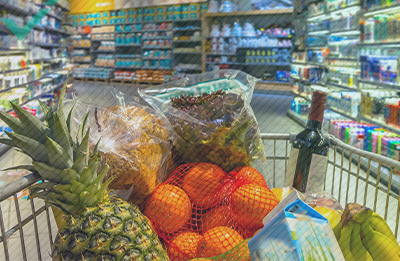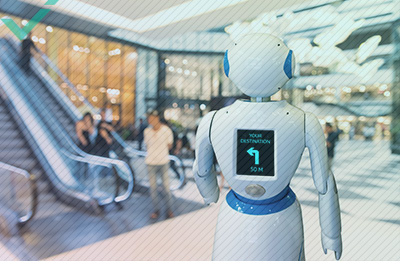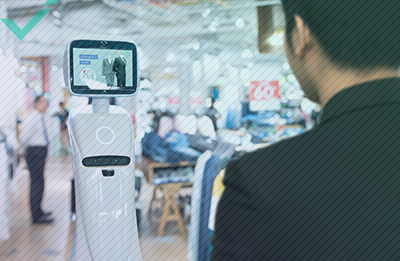Interested in reaching an international audience? Looking to break into new markets across the globe? Well, it’s time you learned about localisation. Read on to find out more about localisation, and why it’s crucial to building a global brand.
WHAT’S IN A BRAND?
“What is a brand?” Ask most regular consumers that question and they’ll probably look at you funny. That’s because, for most people, a brand is little more than a company. And that’s true to some extent; a brand is essentially the name of a company or product. But, as marketers, we know that there’s much more to a brand than just a name. A brand is an identity, a voice, and an attitude. From a marketing perspective, Coca-Cola is much more than a name written in white cursive on a red backdrop, or even a refreshing drink. We identify Coca-Cola with happiness, friendship, fun, and even Christmas.
Why? Because the way Coca-Cola presents itself aligns perfectly with those ideas. Think of all the Coke advertisements you’ve seen in your lifetime. I can guarantee you that in all of those ads, you’ll find something that evokes feelings of happiness, friendship, and fun. In fact, “coca cola” actually means “delicious happiness” in Mandarin. What’s more astounding is that Coca-Cola’s image is consistent all across the globe: 94% of the world’s population recognises the red and white Coca-Cola logo. Coca-Cola obviously isn’t the only company that managed to build up a huge global brand. Other examples include McDonald’s, Apple, and Disney. These companies (and many more) are able to preserve their image and style, while also catering to individual markets. Wondering how they did it?

WHAT DOES IT MEAN TO “LOCALISE” A BRAND?
Localisation is a buzzword in the marketing industry. It essentially refers to the process of taking a brand or product and adapting it to a new market. It’s an umbrella term that can refer to a whole variety of strategies and processes. Essentially, any process you use to ease your transition into a new market could be considered localisation. This may include something as simple as translating your web copy, to something more complex like reimagining an entire ad campaign to be more culturally appropriate. Other processes involved in localisation include transcreation (the act of recreating an ad or another kind of promotional material to adapt it to a new market) and transliteration (the act of transcribing content into another alphabet).
COCA-COLA’S “SHARE A COKE” CAMPAIGN
Again, we can look to Coca-Cola for a great example of localisation: Remember the iconic “Share A Coke” campaign? It launched in 2011 in various places around the globe, drawing in millions in sales. It was particularly successful in Australia, where friendship (or “mateship”) is really ingrained into the local culture. However, the campaign wouldn’t have been as successful in China, for example, where first names are used much less liberally. Coca-Cola knew that of course, and adapted their campaign accordingly. Instead of printing actual names on bottles in China, they replaced them with titles like “classmate” or “close friend”. Coke also made sure to adapt the names they printed on bottles in other countries to suit the nomenclature of those areas. After all, while Michael and Steve may be common names in Australia, you can be sure they aren’t in places like Egypt or Turkey. By making these seemingly small adjustments to its campaign, Coca-Cola ensured its “Share A Coke” idea got maximum reach all across the globe. There are plenty of other great examples of localisation. Check out this article for more localisation case studies.
WHY IS LOCALISATION SO IMPORTANT FOR GLOBAL SUCCESS?
There’s no one-size-fits-all approach to global marketing. Regardless of your niche or the markets you already operate in, you need localisation to help your business expand. After all, you can’t expect the ad campaign you launched in the UK to bring you the same success in the US or South Africa, for example. Cultures vary greatly from one country to another, even if the two speak the same language. Localisation lets you go beyond simply translating your website or slogan, and instead lets you get deep inside the brains of the consumers you’ll be targeting in your new market. Plus, it also ensures your brand and identity remain consistent across each new market, too.

SHOULD YOU TRANSLATE YOUR BRAND NAME?
It’s one thing to translate and localise an ad campaign. But what about your brand name? After all, your company’s name is the heart of your brand, so should you change it in order to better adapt to a new market? Well, there’s no one correct answer. First, you’ll want to check whether your name already exists in the target language of the market you’re moving into. If it does, you’ll want to study how that word is pronounced in your new market and what connotations are attached to it. You might be lucky and find that the connotations attached to your company name perfectly align with your brand, in which case you can keep your original name.
Alternatively, you might find your brand name has all kinds of negative connotations, in which case you’ll want to change it. If the target market you’re breaking into uses a different script, you’ll want to consider the effect that has on your brand as well. Some brands, like Volkswagen, choose not to transcribe their name, regardless of the script used in other markets. Coca-Cola, on the other hand, transcribes its logo. You can see how Coke logos look around the world here. Pepsi also adapted its brand name in Argentina. According to market research, the brand found that many Argentine Spanish speakers struggle to pronounce the “psi” in the name, pronouncing it “pecsi” instead. So, how did Pepsi respond? By changing their name, of course!
Toyota did the same, changing its name from Toyoda (in Japanese) to Toyota (in English) to better suit English phonetics. Again, you’ll have to decide for yourself whether to keep your brand name consistent across the globe, or if you want to adapt it to each new target market. Remember, there’s much more to a brand than just a name. If you decide to expand your business into a new market, be sure to analyse all aspects of your brand, and look for ways you can adjust it to better suit the market you’re moving to. For more tips on how to adapt your brand and achieve global success, visit our blog and check out our range of content creation services.


